Everything You Need to Know about Microsoft Windows Virtual Desktop on Azure
Time to read: 15 mins
Many of your competitors – possibly even partners – are already taking advantage of virtual desktops to power their remote workforce and beyond.
Technologies are often the exciting agents of change that evolve the ways our employees work, enhancing productivity, boosting workplace efficiencies, or even enriching collaboration. But Azure Virtual Desktop (or AVD) is more than a secure gateway into working from remote devices. AVD simplifies how easily and securely different teams can access key company information and everyday applications from their devices.
Azure Virtual Desktop can save your organisation time, free resource availability, and even create cost efficiencies. When it’s delivered by an accredited Microsoft partner who holds an ‘Advanced Specialisation’ in AVD, then a business can expect solution excellence that can be tailored to specific challenges and scenarios.
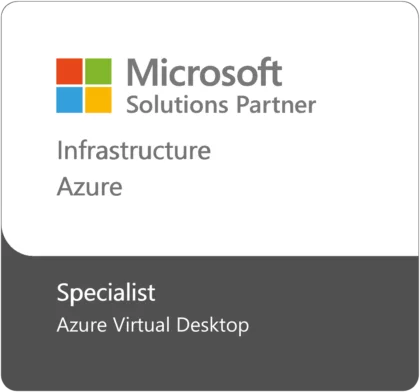
Those managing deep, richly complex IT environments may have heard of Azure Virtual Desktop, which is sometimes referred to as Microsoft Windows Virtual Desktop (or WVD). So, you are deciding whether AVD fits into your business. What, exactly, are the benefits of AVD? And how does it work to your advantage when you partner with a cloud service provider (CSP) who has deep Azure Virtual Desktop specialisation skills?
AVD at a glance
Looking for a cost-effective, highly secure, and scalable way to capitalise on personalised workspaces? Buyers should look no further than AVD if they are on the market for improved security, scalability, cost-efficiencies, better performance, and lower energy consumption.
There’s more: with Azure Virtual Desktop Infrastructure (VDI), businesses can make the most from cloud agility, along with pay-as-you-go pricing, and scaling capabilities. For businesses, this means you only pay for what you use.
What is a Virtual Desktop?
A technical definition of Virtual Desktop describes a software platform that enables secure access of applications and data that can be reached across different locations and end devices on a network.
Simplified, a virtual desktop is a way of extending beyond a physical desktop screen in an office. End devices such as remote laptops and company phones can access the same information, data, and applications as the hardware found in your office securely over a network.
Azure Virtual Desktop, Explained
Windows Virtual Desktop on Azure offers the WVD service with the convenience of using the applications your employees use every day within the Microsoft suite.
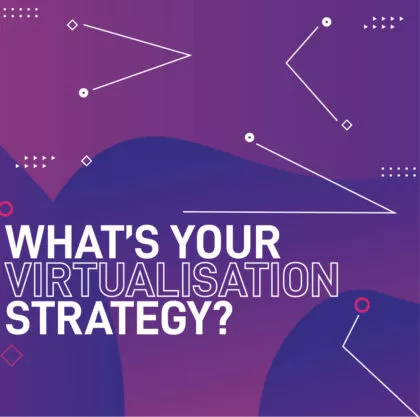
At a glance, here are a few of the key tasks you can achieve on Azure Virtual Desktop:
- Get the full Windows experience
- Optimise Microsoft 365 applications for virtual scenarios
- Virtualise any desktop or application
- A unified management experience to supervise desktops and applications from afar
- Deploy your desktop to any device
What are the Benefits of AVD?
If your flagship goal right now is how to efficiently approach desktop virtualisation, then AVD has market leadership when it comes to building scalable, flexible environments. As a household name, Azure is Microsoft’s cloud VDI (virtual desktop infrastructure) solution with cornerstone security and management capabilities that makes it desirable for high-demand settings like the everyday productive working environments found across global enterprises.
- Removes expense as you pay only for your consumption
- High resiliency (99% availability)
- Configurable to various needs
The following scenarios benefit businesses to run AVD:
Managing a Remote Workforce
Whether you operate in regulated financial markets, or supervise manufacturing workloads, the common goal of enabling efficient, secure remote working opportunities for employees traveling beyond the office is critical in creating productivity gains across an agile, mobile business. Commutes, travelling offsite, client engagements – your end users will need devices that perform remotely without any security compromise and little disruption.
If we measured the popularity around virtual desktop in a search engine like Google, then the height of the pandemic (2020 – 2022) saw a tangible surge in interest, according to Google Trends. During this period, agile businesses were digitally transforming to quicken how easily their end users and devices could adapt to remote working demands.
Arguably the key talking point of AVD relates to remote working: where businesses are interested in simplifying modern workplaces, virtual desktops facilitates secure and productive remote work. In a post-pandemic working climate, end users may be remote, but AVD also support in their mobility, such as travelling to client engagements, or interacting with other global colleagues and offices.
Security by Default
Azure’s approach to security means that patching and updates result in a protected network. More importantly, customers can layer in additional security controls such as multi-factor authentication (MFA) to ensure a hardened platform that’s better protected than a traditional castle-and-moat style of security.
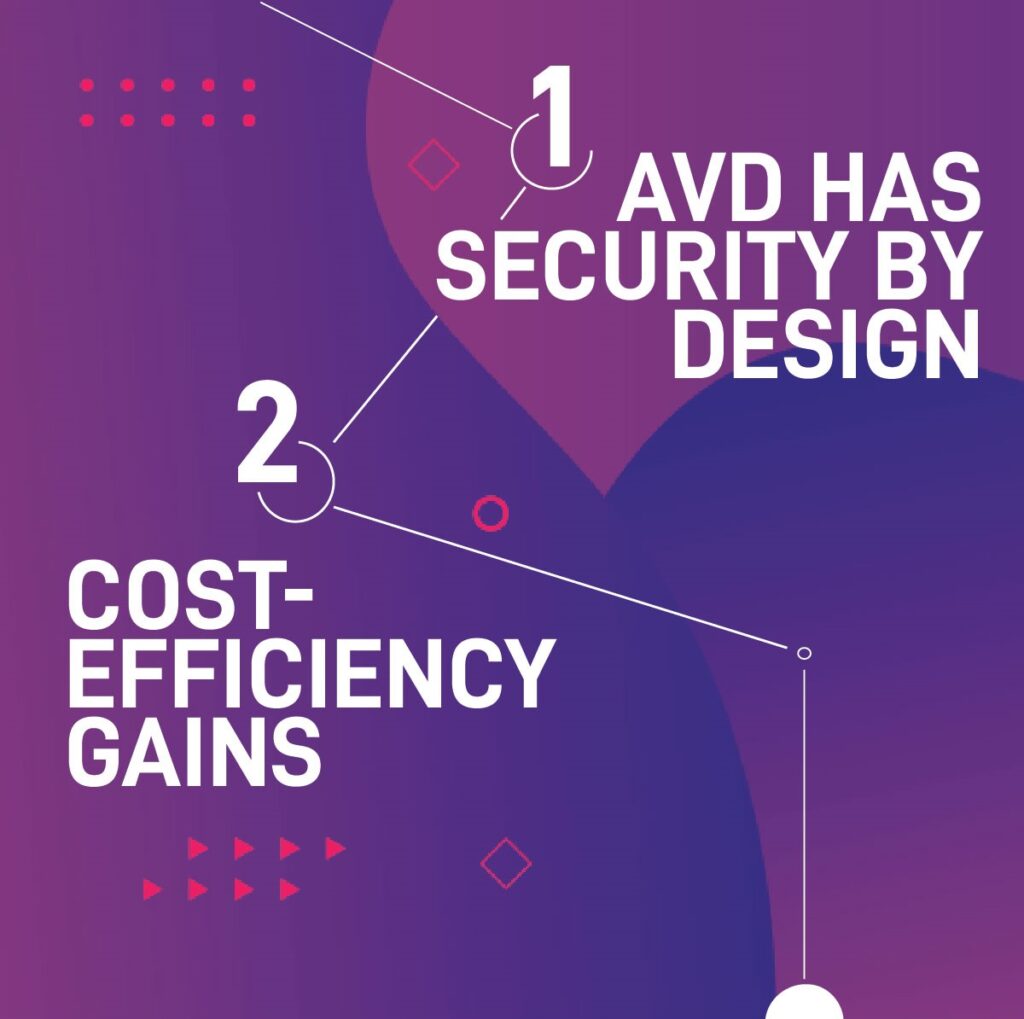
Security is paramount in the digital era, where customers, employees, and other end users rely on remote connectivity and visibility to find your business, consume its products and solutions, and work outside traditional office spaces. Where security guidance is procedural in AVD, protection is simplified and easily enabled to build up, fortify, and secure your data.
Explore AVD Benefits
- Cost-efficiencies for existing licence holders
- Scalability options that are desirable for agile businesses
- Optimise for Microsoft 365 applications
- Performance-based flexibility
What’s Your Virtual Desktop Strategy?
Depending on the demands and drivers that led to your desktop virtualisation project, your business could achieve its goals in AVD, including hardware costs reductions, improved desktop security, and remote work enablement. In 2023 and beyond, many organisations are carefully and strategically building to, and supporting, a cloud-first or cloud-forward strategy. AVD is desirable in laying down foundations to push towards many of these goals.
If you’re navigating different conversations around a virtual desktop strategy, then you’ll need to align to the right expertise to ensure you maximise on the security capabilities and save costs in the process.

Microsoft Windows Virtual Desktop Specialisation
When a business calls focus into its expertise, what exactly do they mean when they’re talking about desktop virtualisation?
A Microsoft Advanced Specialisation describes a milestone in the Azure marketplace – these specialisations are a badge of honour that validates the highest capabilities within Microsoft partners like CSI. In particular, these are often complex solution areas that requires demanding expertise to deliver into today’s fast-paced, modern businesses.
Specialist accreditation here, under Microsoft’s guidelines, is rigorously scrutinised and reviewed by independent third-party audits, which exist to verify CSI’s skills in delivering exceptionally to clients.
At CSI, we are officially recognised in this specialised marketplace for successfully passing the Microsoft Advanced Specialisation Audit for Azure Virtual Desktop. This means CSI is expertly adept (and supported by Microsoft) in delivering robust services, such as AVD.
What does this mean for your business?
Working with CSI unlocks this deep knowledge, experience and skill set into your own organisation, extending out your cloud capabilities. We have proven success in deploying, scaling, and securing virtual desktop infrastructure on Azure.
The AVD Specialists
CSI’s Azure technicians are on-hand to help your business save money, secure, scale, and innovate using the industry’s leading cloud platforms. With our advanced specialisms, you can take advantage of partnering with unrivalled expertise in a market that demands flexible, cost-effective solutions to meet business objectives.
We have access to exclusive resources, support and incentives from Microsoft – which are enriched through our projects.
What can you expect from a CSI engagement?
Faster deployment, smoother operation, and better outcomes from desktop virtualisation. Get in touch today to discuss how your AVD project could benefit from working with our technicians.

About the author
Read more articles
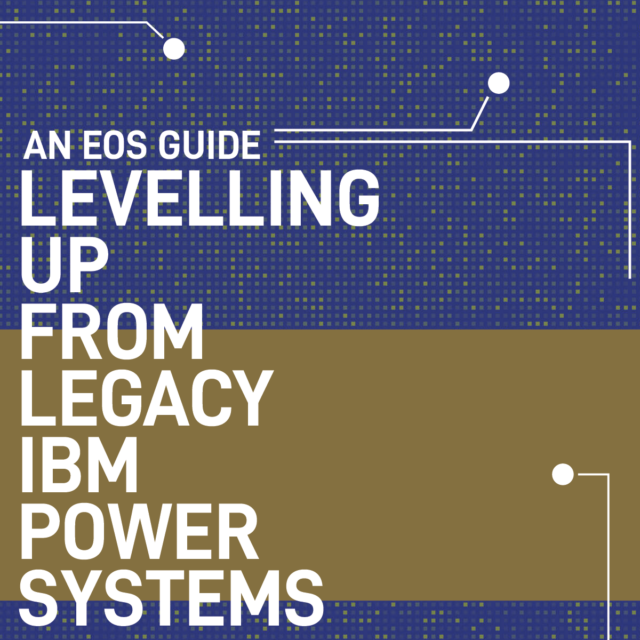
IBM Power
Levelling Up from Legacy IBM Power Systems (An EOS Guide)
Why Modernisation Matters Modernisation is often about market competitiveness and relevance. For modernised organisations, offboarding outdated hardware is a matter…

IBM Power
Why Private infrastructure is better for AI
Running AI Models vs. Building New AI Models: Inferencing and Training To make informed platform choices depends on a clear…
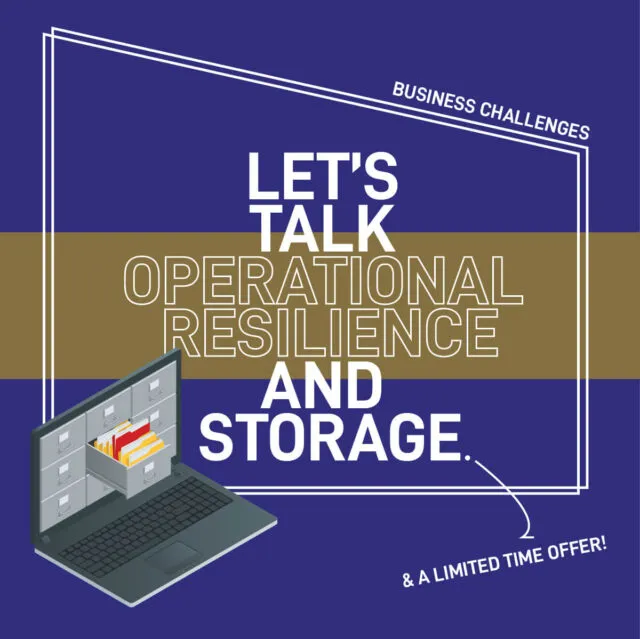
Storage and Backup
Improving Operational Resilience (With AI-driven Technology)
The Financial Impact of Cyber Attacks is Underestimated On average, analysts have discovered, a cyber-attack will force a UK SME…
Ready to talk?
Get in touch today to discuss your IT challenges and goals. No matter what’s happening in your IT environment right now, discover how our experts can help your business discover its competitive edge.
